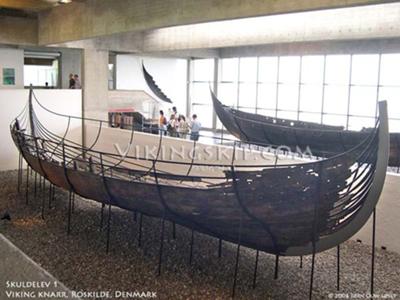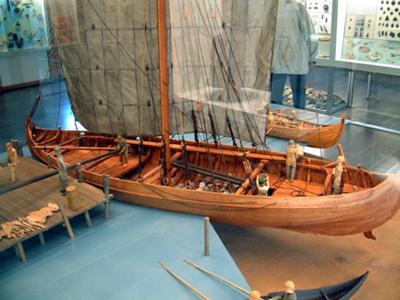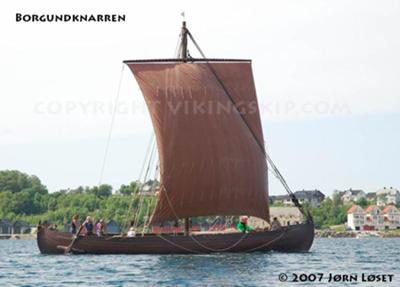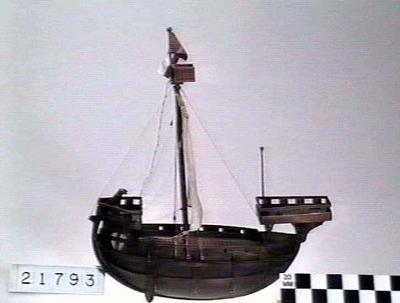The Anglo-Norman ships of the Cinque Ports.
by Han
(Brittany, France.)

wreck of original knarr

model of a knorr

replica knarr

model of a ship of the Cinque Ports
This site has demonstrated that many people nowadays are interested in shipping in the Middle Ages. Early in these series I chose to describe the cog as an example of ship in that period because it represented a new development. That now seems to have been a mistake, for a lot of people thought the cog was the only ship-type back then as indicated by the many questions on the history-forum.
To make up for this omission: here is an article on the Nef or, as I prefer, the ship of the Cinque Ports: http://en.wikipedia.org/wiki/Cinque_Ports
The words navy and navigation have their roots in Greek, and were introduced in the European languages by the Latin-speaking Romans as were many other words in English, French, Portuguese, Spanish and other languages. The root in this case is the Greek word naus (navis in Latin), which means 'ship'. Navis -ship and word- travelled west and north and became nau in Irish, noe in Welsh, and (only for this article, it appears even in Armenian and Russian) as nef in Anglo-Norman where it was used to indicate the descendants of the Viking knörr.
I fear it takes a linguist to explain the relations between the letters u and v, a and e, and how a v could change to f, but for the relationship of u and v I have my own layman's explanation: the English pronounce the w as double-u and the French as double-v.
As you undoubtedly know, the Normans in Normandy were Viking descendants who successfully invaded England in 1066. They still used the knörr as their main naval transport between Normandy and the south of England; the longship was no longer useful because it could not take horses, the tanks of the time.
Nobody now knows the size of these ships (or nefs), as the main source of information on them come from the Bayeux tapestry, on which the proportions are not to be trusted. However, we can safely presume their length was about 40 ft and the beam some 9 1/2 ft.
In time fore- and aft-castles were added to accomodate archers, but the hull-stucture remained the same: clinker-built, round-bottomed, curved stem- and sternpost, side-rudder, one mast with a square sail. The appearance of the Carrack, some centuries later, changed that.
For those interested in the differences and resemblances concerning naval terms between the northwestern European languages: please read
http://www.mun.ca/mst/heroicage/issues/8/sayers.html

